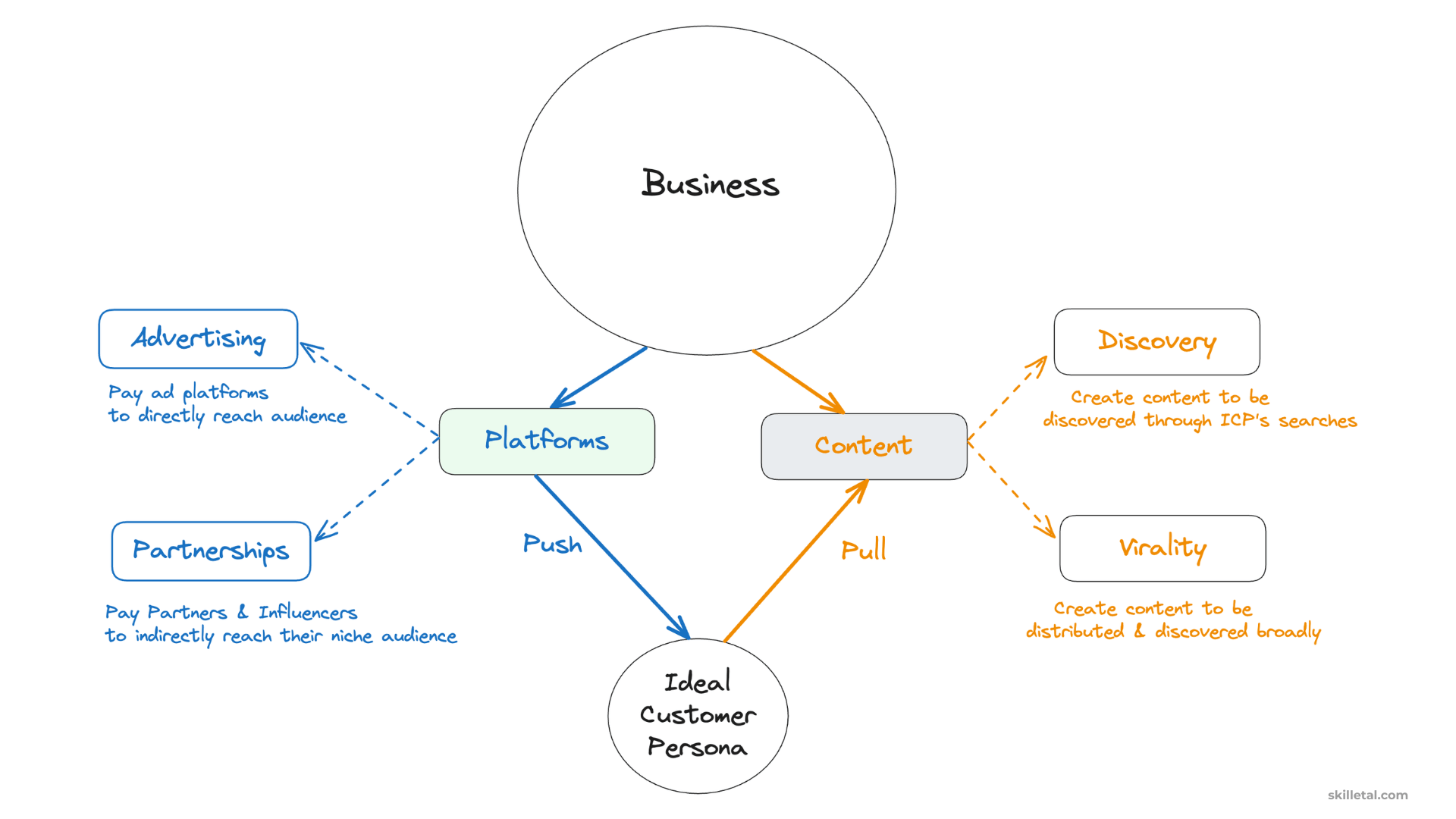What are Push Channels?
Push Channels play a pivotal role in the user acquisition strategies of many businesses. This concept focuses on understanding what Push Channels are and how they operate within the context of growth strategies.

Defining Push Channels:
Push Channels are direct marketing tactics where a business initiates the conversation with potential customers. Examples include email marketing, direct mail, telemarketing, and paid advertising on various platforms.
Advantages of Push Channels:
One of the primary advantages of Push Channels is the speed of scaling; they allow for rapid audience reach and engagement. Additionally, they offer more deterministic outcomes, meaning the results can be more predictable and measurable compared to Pull Channels.
Disadvantages of Push Channels:
However, Push Channels come with their set of challenges. The scaling costs can be significant, as these channels often require continuous investment to maintain visibility. Unlike Pull Channels, Push Channels do not contribute to long-term internet real estate, such as organic search rankings or content libraries.
Suitability for Businesses:
Push Channels are particularly effective for businesses needing immediate results, such as startups in a competitive market or companies launching time-sensitive campaigns. However, they may be less suitable for businesses with limited marketing budgets or those seeking to build long-term, organic customer relationships.
Understanding the strategic use of Push Channels, with their benefits and limitations, is crucial for developing a balanced and effective user acquisition strategy.